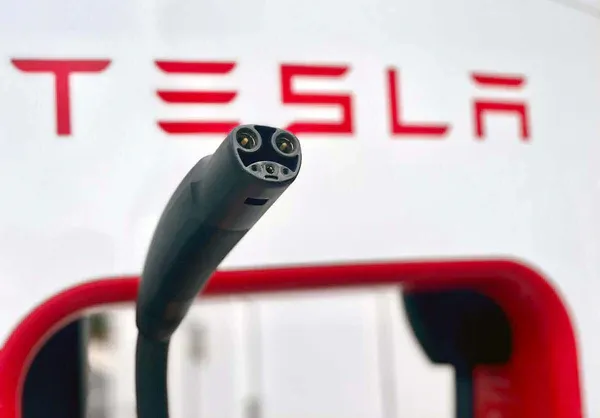As electric vehicles (EVs) continue to gain popularity, the need for efficient and convenient home charging solutions has become crucial. The North American Charging Standard (NACS), developed by Tesla, is rapidly emerging as a popular option, offering a streamlined and versatile charging experience. In this article, we’ll dive deep into the NACS, explore its advantages, and provide practical tips on finding the best NACS home charger for your EV.
The North American Charging Standard (NACS) is a charging connector interface designed by Tesla Inc., which has made it available for use by other automakers and charging network operators. Unlike the widely adopted Combined Charging System (CCS), the NACS connector is significantly smaller and uses the same pins for both AC and DC charging. This unique design simplifies the charging process while ensuring compatibility with various power levels.
Tesla first introduced the NACS connector in 2012 as a proprietary charging interface. Since then, it has been the standard on all Tesla vehicles, enabling efficient charging through the Tesla Supercharger network. In contrast, most other EV manufacturers use the CCS1 in North America and CCS2 in Europe for DC fast charging.
The compact design of NACS offers several advantages over CCS, including reduced complexity in wiring and enhanced charging efficiency. Because AC and DC pins are shared, the power flow is managed by control electronics, which can seamlessly switch between the two modes. This architecture impacts the vehicle’s onboard charger, high-voltage wiring, and power distribution systems, resulting in a more integrated and streamlined charging experience.

Tesla vehicles are natively compatible with NACS (North American Charging Standard) Superchargers, but non-Tesla EVs can also use them with a NACS adapter. Unlike Tesla’s older proprietary connector, which relied on the CAN bus communication system, NACS adopts the ISO 15118 protocol—the same standard used by CCS (Combined Charging System). This compatibility enables CCS-equipped vehicles to access Tesla’s Supercharger network via an adapter.
Currently, Tesla’s Supercharger V3 network in North America provides up to 250 kW for DC fast charging. However, NACS is designed for even greater flexibility and future scalability:
AC Charging: Supports up to 80 amps at 277 volts, making it suitable for slower charging at homes or workplaces.
DC Fast Charging: Capable of delivering up to 500 amps at 500 volts, ensuring readiness for next-generation high-power EVs.
By integrating CCS-compatible communication and higher power potential, NACS enhances accessibility and performance, paving the way for broader EV adoption.

As of now, only the Tesla Supercharger network natively supports NACS for both AC and DC fast charging. However, drivers of J1772-compatible EVs can still access Tesla Wall Connectors, Mobile Connectors, and Destination Chargers using a Tesla-to-J1772 adapter. This flexibility makes it easier for non-Tesla EV owners to benefit from Tesla’s vast charging infrastructure.
While it’s possible to charge an EV or plug-in hybrid using a standard 120-volt outlet (Level 1 charging), this method is slow—adding just 3 miles of range per hour. For daily EV users, a 240-volt Level 2 home charger (often referred to as Electric Vehicle Supply Equipment or EVSE) is a game-changer. Level 2 charging can deliver up to 25 miles of range per hour, depending on the vehicle and charger specifications.
Charging at home is usually more cost-effective than public charging stations, and the convenience of having a fully charged car every morning cannot be overstated. Investing in a high-quality home charger can significantly enhance your EV ownership experience.
Selecting the right home charger requires careful consideration of various factors. Here are the key points to keep in mind:
Chargers with higher amperage provide faster charging speeds. While 40- and 50-amp chargers are common, some homes can accommodate 80-amp chargers, offering nearly double the speed.
A longer charging cable provides more flexibility in mounting the EVSE and reaching the car’s charging port, even if your next EV has a differently positioned port. Opt for a 25-foot cable if possible.
A wall-mounted hook for the charging cable can prevent clutter, reduce dust collection, and minimize tripping hazards. Placing the connector holster away from the unit can help in tight spaces.
Consider the physical size of the charger and available wall space. Slim designs are ideal for compact garages or tight spots.
Many EVs come with built-in charging timers, but some chargers offer scheduling options via an app. This feature can save money by taking advantage of off-peak electricity rates.
Setting up a NACS home charger requires careful planning and professional installation to ensure safety and compliance with local electrical codes. Here’s what you need to know:
Ensure your home’s electrical panel can handle the additional load. A dedicated 240-volt circuit is necessary, and a 40-amp or higher circuit breaker is recommended for faster charging.
Although some chargers can be installed DIY-style, it’s safer to hire a licensed electrician. They can handle wiring, grounding, and mounting safely.
Check with local authorities about permits and installation requirements. Some areas may require inspections before activation.
Position the charger near your vehicle’s parking spot for easy access. Consider weatherproofing if installing outdoors.
Ensure the charger is within range of your home Wi-Fi for remote monitoring and app control.
Here are some of the top NACS home chargers available today:
The go-to option for Tesla owners, offering up to 44 miles of range per hour with a sleek design and Wi-Fi capabilities.
A reliable, rugged Level 2 charger suitable for various EVs, known for durability and safety features.
A versatile charger with smart app control, energy monitoring, and flexible amperage settings.
Choosing the right NACS home charger can enhance your EV ownership experience by providing convenient, cost-effective, and fast charging. Consider factors such as amperage, cable length, and smart features to ensure seamless charging at home. With the right setup, you can enjoy the full potential of your EV while reducing your carbon footprint.